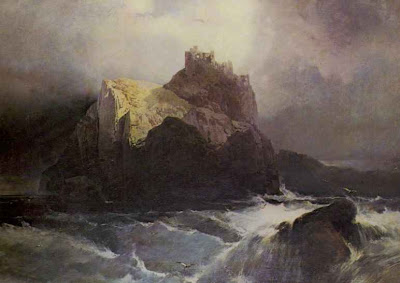In Search of Ireland ISBN 0413548503 was re-issued by Methuen in 2000
Rating: 




A Fleet Street reporter, H. V. Morton (1892-1979) fought in the First World War and was in Egypt in 1922 at the opening of Tutankhamun’s tomb. One of the century’s most popular travel writers, he wrote books about Spain, Italy and the Middle East as well as the famous ‘In search of..’ series on the British Isles.
Something to remember about Morton’s book on Ireland is its historical perspective. In Search of Ireland was first published in 1930, which was a few years after Ireland had become a Free State in 1922. Morton is seeing Ireland in the early stages of independence separated from Britain. He warns the English in his introduction, “We must forget the hosts of prejudiced ideas about her which have accumulated during centuries of strife and misunderstanding…I must stress the point that the new generation of travellers must approach Ireland with the feeling that it is a foreign country.” I could not help but reflect on the history he refers to, when England was so often the aggressor, and Ireland the betrayed. Sometimes it seems he relates the events connected with a place without examining the underlying issues, he observes the empty cottages with hardly a mention of the famine or the forced evictions, or that emigration was so often not a choice, but a matter of survival. Nonetheless, Morton’s humorous and insightful observations about Ireland, as a traveller in a foreign land, are worth reading and re-reading.
“Dublin in the early morning, with the sun shining, is a city the colour of claret. The red-brick Georgian mansions, with fine doors, fanlights, and little iron balconies at the first-floor windows, stand back in well-bred reticence against wide roads, quiet and dignified, as if the family has just left by stagecoach.” Prose of this quality is what raises travel writing to literature, and Morton’s skill as an evocative writer is worthy of the best of his era. In explaining about the Book of Kells, which is kept in Trinity College, Dublin, he says that during the three darkest centuries of English history it was Ireland that was saving Greek and Latin for Europe..
windows, stand back in well-bred reticence against wide roads, quiet and dignified, as if the family has just left by stagecoach.” Prose of this quality is what raises travel writing to literature, and Morton’s skill as an evocative writer is worthy of the best of his era. In explaining about the Book of Kells, which is kept in Trinity College, Dublin, he says that during the three darkest centuries of English history it was Ireland that was saving Greek and Latin for Europe..
Continue reading In Search of Ireland (1930)







.jpg)






